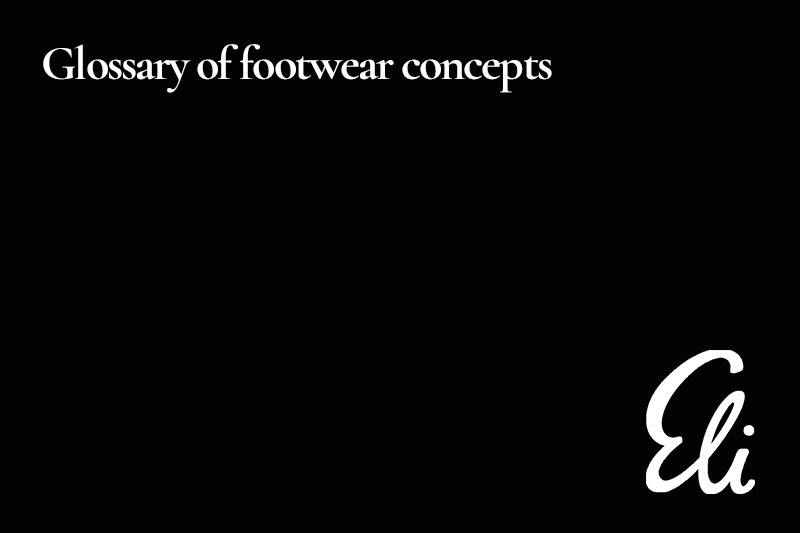
19 Oct Glossary of footwear concepts (16)
Sixteenth entry corresponding to the series of posts in which we are compiling different terms in a glossary of footwear concepts (16). Within our field, there are numerous terms that refer to important elements in the manufacture and design of shoes.
We continue with other concepts from the world of footwear arranged in alphabetical order (Translator’s note: the alphabetical order is lost in the translation from Spanish into English).
Fasteners
They are generally made of a nylon fabric, and it is a very common way to adjust the laces. Fasteners are often sewn under the front pieces to hide them.
Assembling manufacture process
It is the gluing process to assemble the upper of the shoe to the sole without requiring an oven. The EVA foam and rubber sole is pre-cured. Water-based or solvent-based PU cement is used to bond the sole to the upper. This type of mounting requires heat tunnels to dry. Once the pieces are glued together, a sole press is used to press the pieces together. Generally, there are 3 operations that give pressure: upper, sides and from the toe to the back.

Glossary of footwear concepts
Rubber abrasion test or NBS
It is a rating system for abrasive wear of rubber. The classification used to measure the rubber abrasion test is: 400, 800 or 1,200 NBS.
PU
Polyurethane abbreviation. The materials that make up the upper of the shoe usually use a very thin layer of PU foam together with a non-woven fabric as a reinforcement to add strength to the main material. We can find PU in hundreds of different textures and colours.
Pullover
With the pullover, the pattern and fitting on the last are verified. When developing a shoe for the first time, the first thing you see is the upper without a sole, probably without logos or graphics.
Toe-cap
It is the piece at the front of the shoe, where the toes are located. It is usually reinforced. There are many types of toe-caps, with different sizes and widths. Fashion-oriented shoes may have narrow, pointed toes. On the other hand, work shoes have more space for the fingers.
Photo credit: Eli 1957
